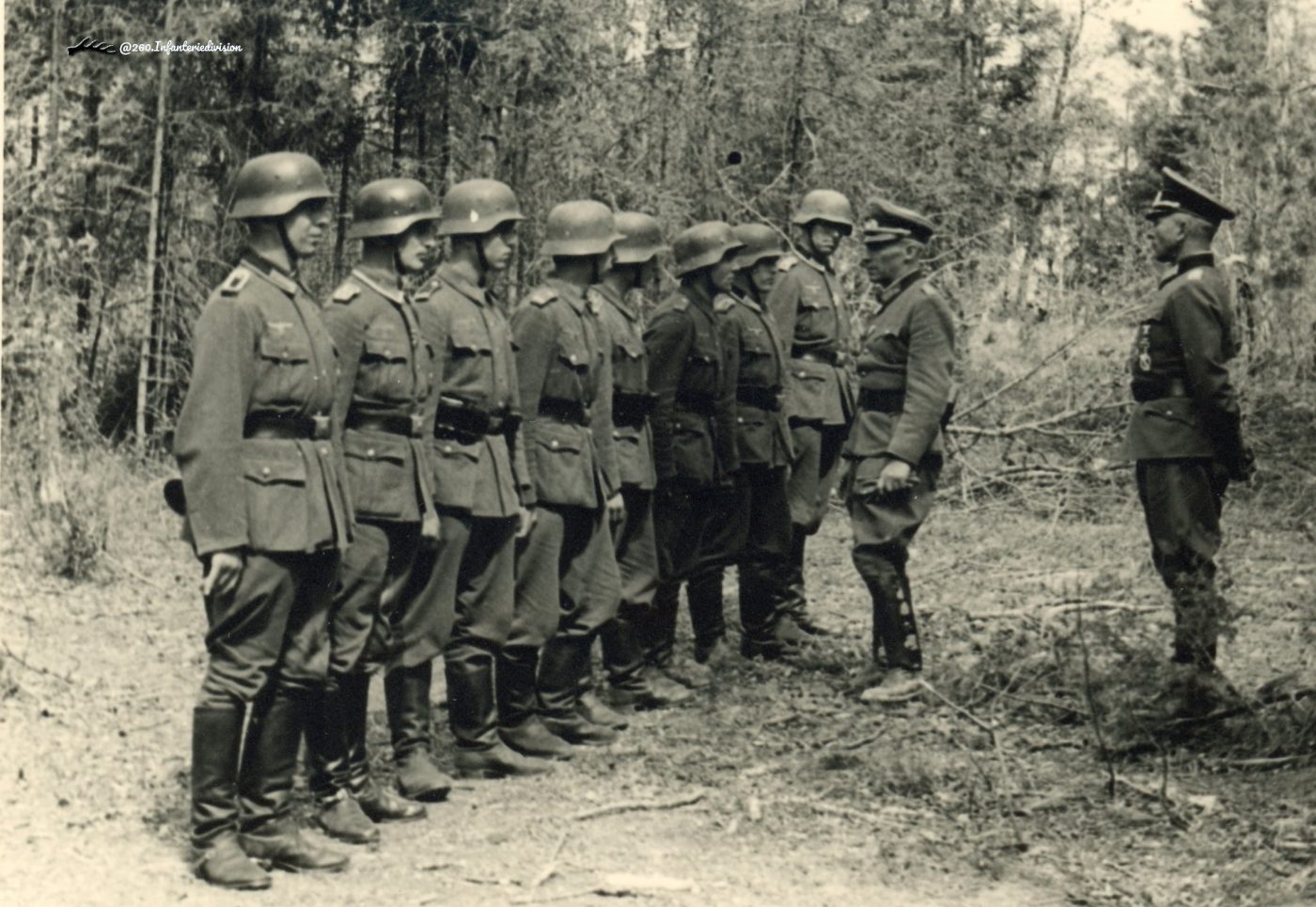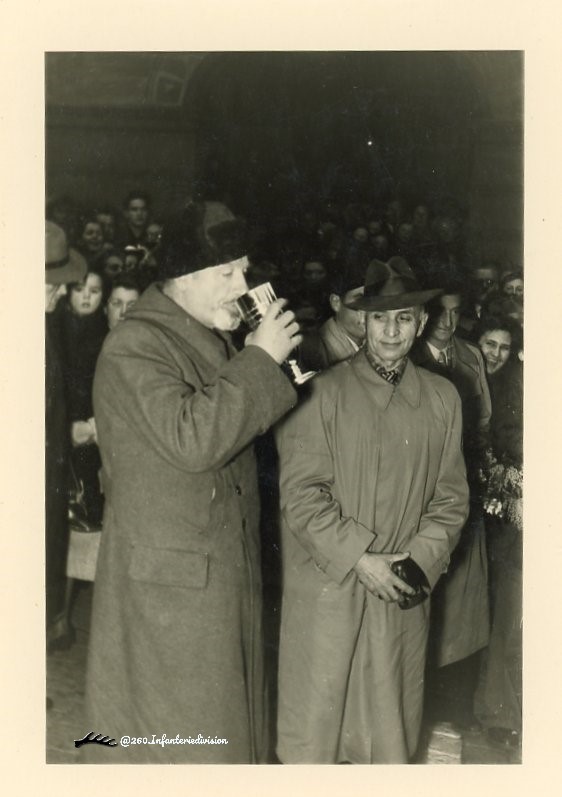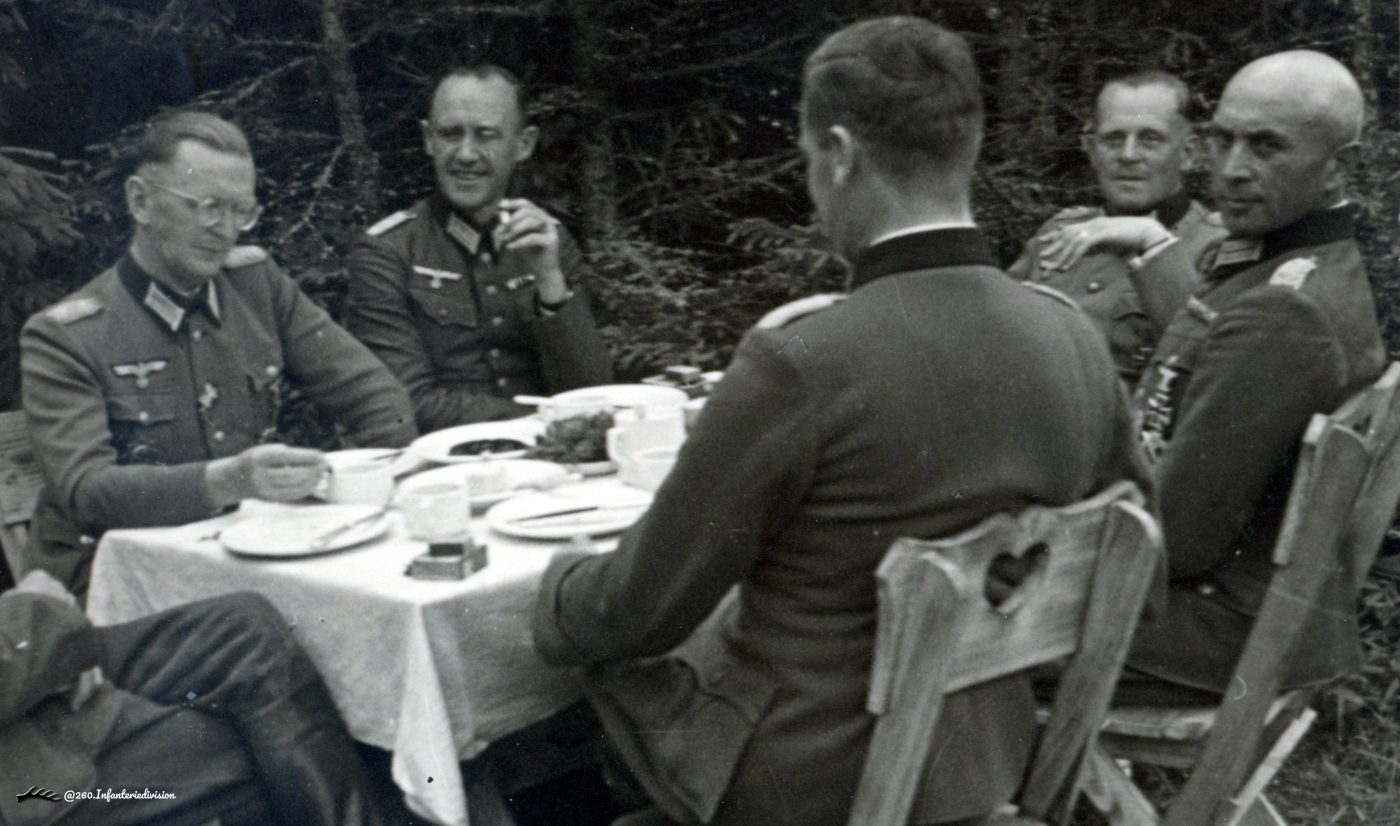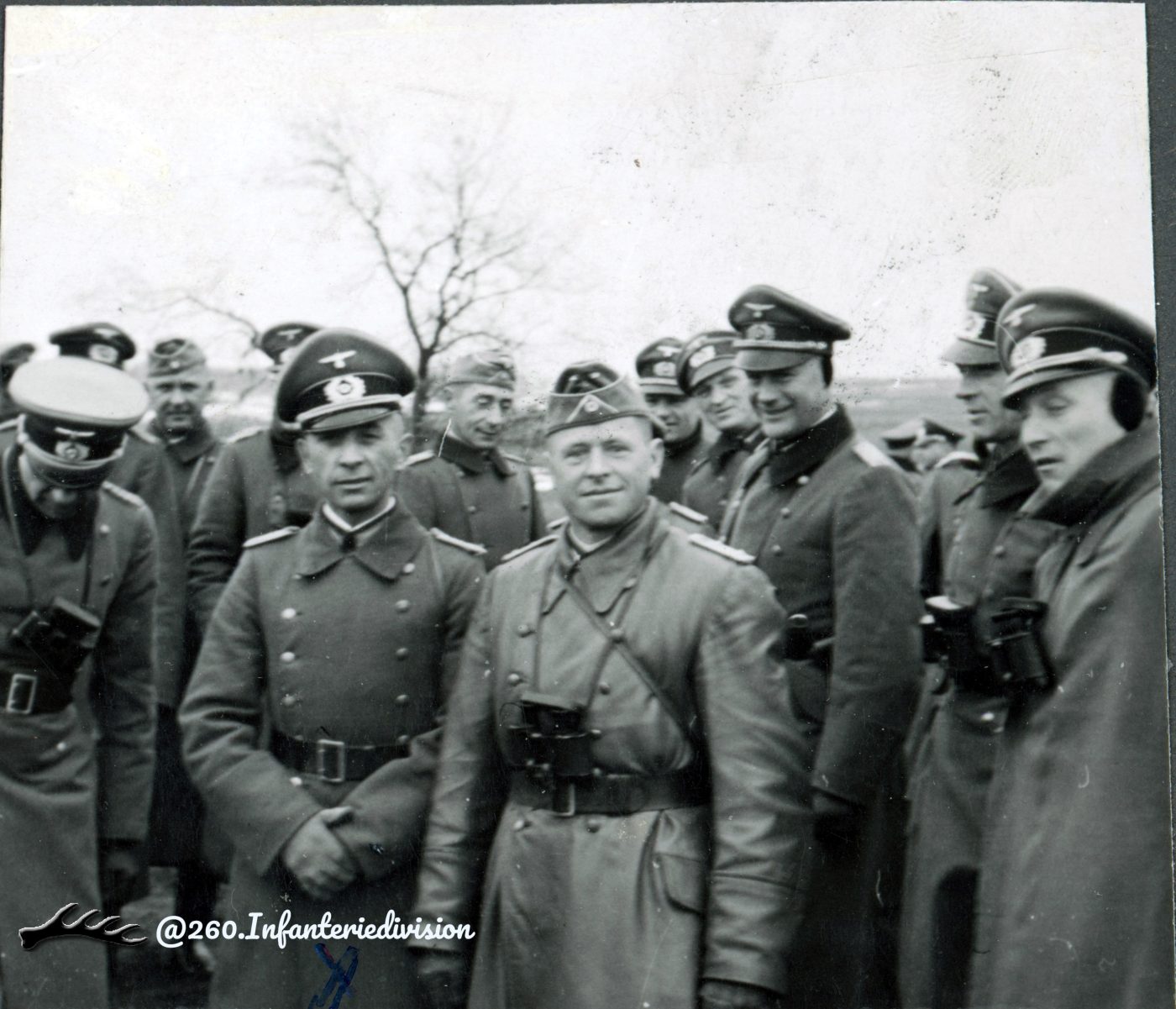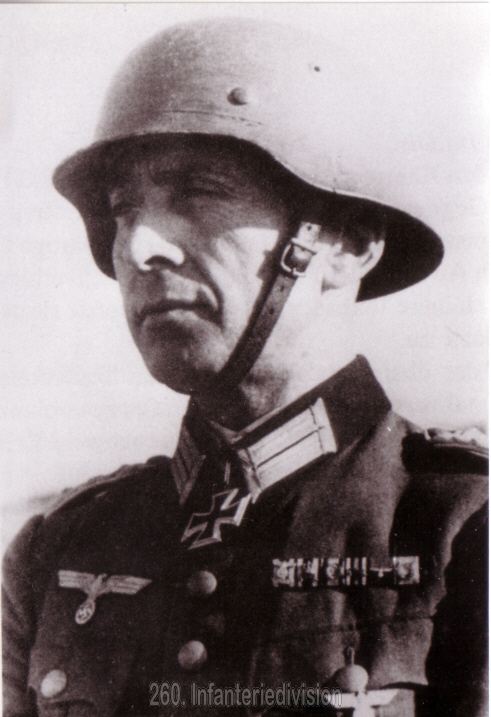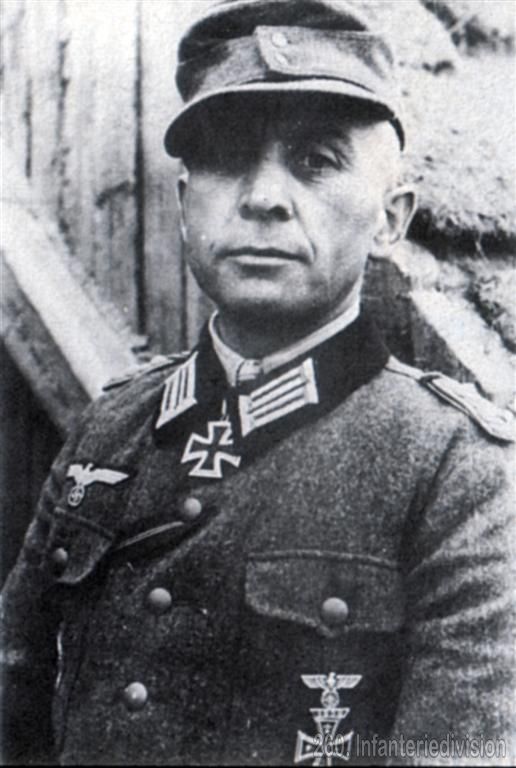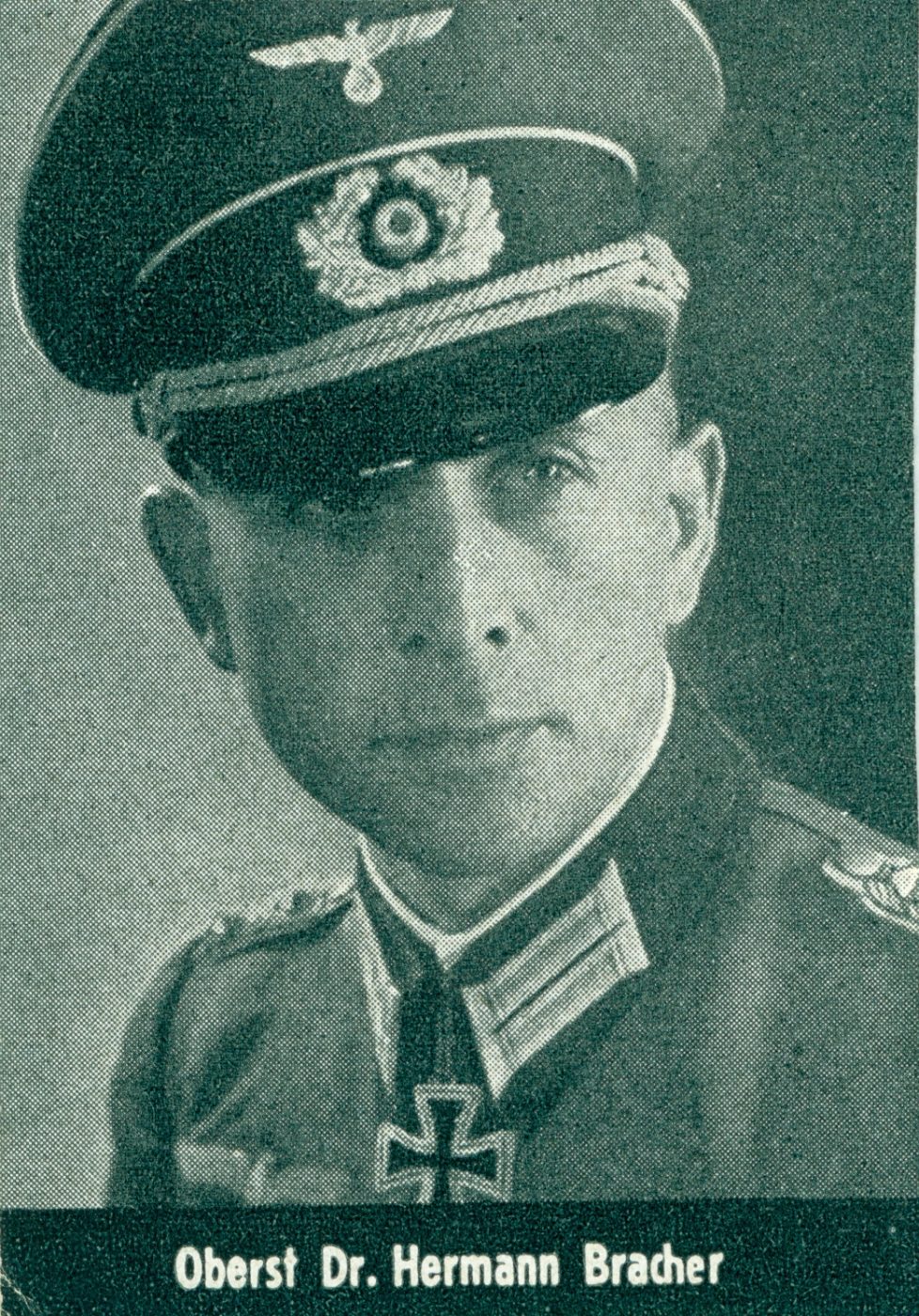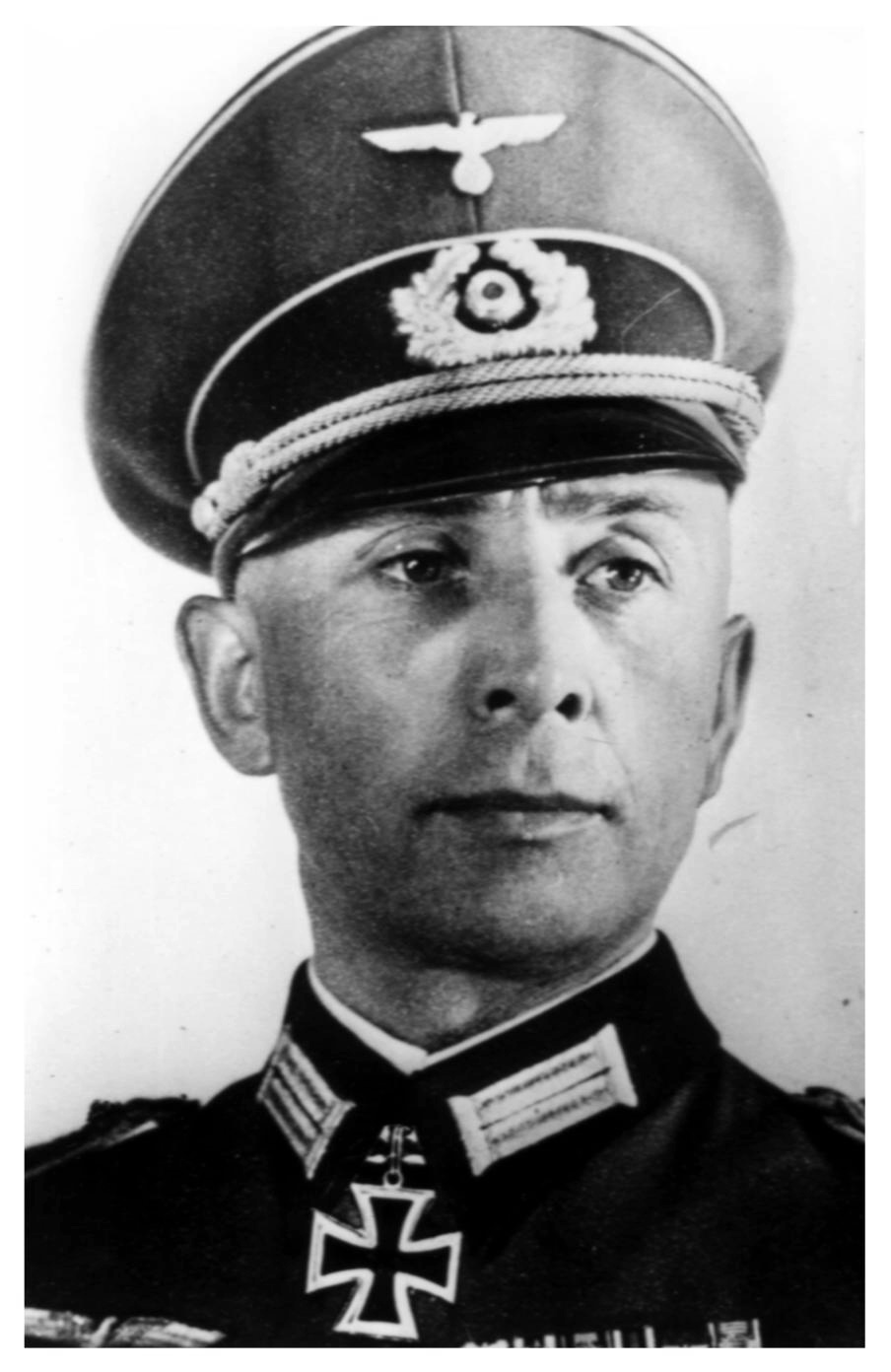Hermann Julius Bracher was born in Ulm on September 28, 1895. The later doctor of agricultural sciences entered military service on 07.07.1913 as a Fahnenjunker in the 3rd (Württemberg) Infantry Regiment 121.
The First World War began for him on 09 August 1914 when he was ordered to the front. Just a few days later, he took part in the Battle of Longwy and was wounded for the first time on August 22 at Cosnes-et-Romain. He returned to the front on 09 January 1915 and attended a company commander’s course at the Loje hut camp from 26 May to 09 June 1915. Back with the troops, he suffered his second wound on July 21. As a result, after his recovery, he was transferred to Infantry Replacement Battalion 121 on 07 September 1915. In October and November 1915, he fought in Serbia and was severely wounded by artillery fire on 07/21/1915.
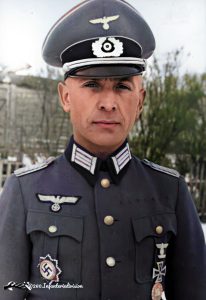
After returning to front-line duty from 22 September 1915, he was ordered on leave on 18 May 1916. Shortly thereafter, on August 04, 1916, Hermann Bracher fell ill. Healthy again, he took part in the Battle of the Somme in August 1916. Here he suffered his third wound on August 17th.
In January and February of the following year he was granted leave to be appointed leader of the Storm Detachment of the 26th Infantry Division from March 24, 1917. With this unit he experienced the Battle of Flanders. He returned to his regiment on 04 September 1917 and took command of the 5th Company on 12 September 1917.
In the period 07 – 12 January 1918 he was ordered to the 58th Course at the Army Gas School, which was held in Berlin. After another leave of absence, on May 15, 1918, he was appointed leader of the 2nd Machine Gun Company. In July 1918 he led the II Battalion by proxy, rather he became leader of the II Battalion on 02 November 1918.
After the end of the war Hermann Bracher was discharged from military service on March 15, 1919.
He graduated from the Agricultural University of Berlin on 02 May 1927 with the grade „Very Good“ and was awarded a doctorate in agricultural sciences.
As a retired lieutenant colonel, Dr. Bracher took part in a selection exercise with the 6th Company, Infantry Regiment 13 in Ludwigsburg and finally became a soldier again on April 01, 1937. In the period between 01 May and 31 July 1937 he passed a probationary period as a supplementary officer and was subsequently transferred to the Supplementary Officer Corps. From 02 November 1937 he took over the post of chief of the 15th Supplementary Company of the Infantry Regiment 35, later on 01 April 1938 he became chief of the 17th Company.
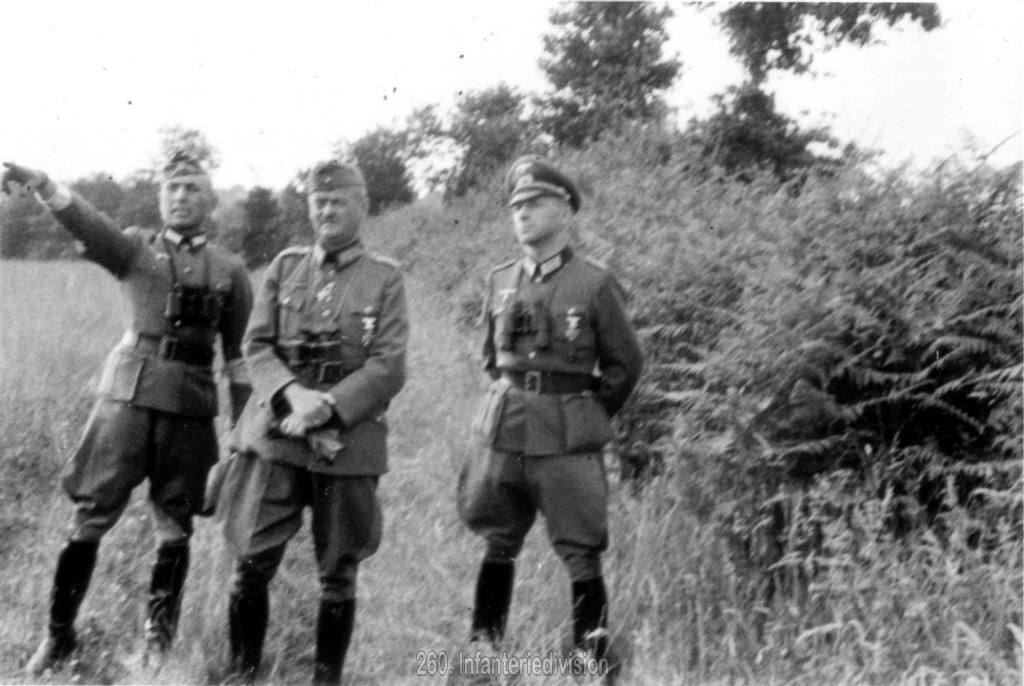
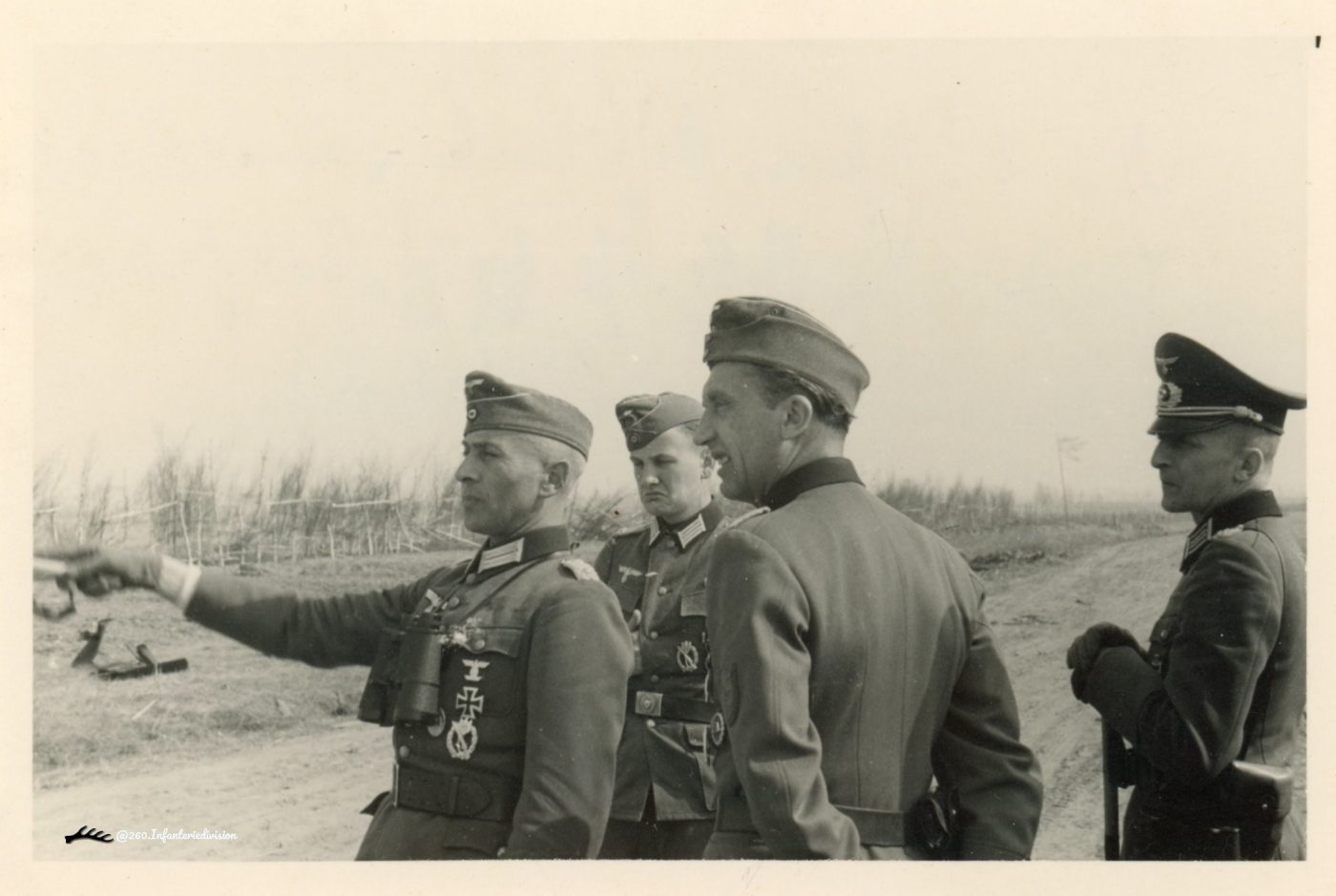
Shortly before the outbreak of World War II, on 23 January 1939, he became the company commander of the 15th (anti-tank) Company in Infantry Regiment 470, thus becoming a soldier of the 260th Infantry Division for the first time. On the day of mobilization, 26 August 1939, he became chief of the 14th Company / Infantry Regiment 470 – also an anti-tank company.
On 01 January, Captain Bracher was promoted to major. During the fighting in France, he was transferred to the II Battalion of Infantry Regiment 470 and on 01 February 1940 was appointed its commander.
After the armistice in France, he was transferred to the active troop officers of the peacetime rank on 01 December 1940. During the battles in Russia, he was wounded on 31 August 1941. According to a report dated 08 November 1941 of Infantry Replacement Battalion 480, he was transferred from there to Infantry Regiment 55. However, on November 25, 1941, he then returned to the 260th Infantry Division and was appointed commander of the I Battalion of Infantry Regiment 480, thus also becoming the immediate superior of my grandfather Michael Korn.
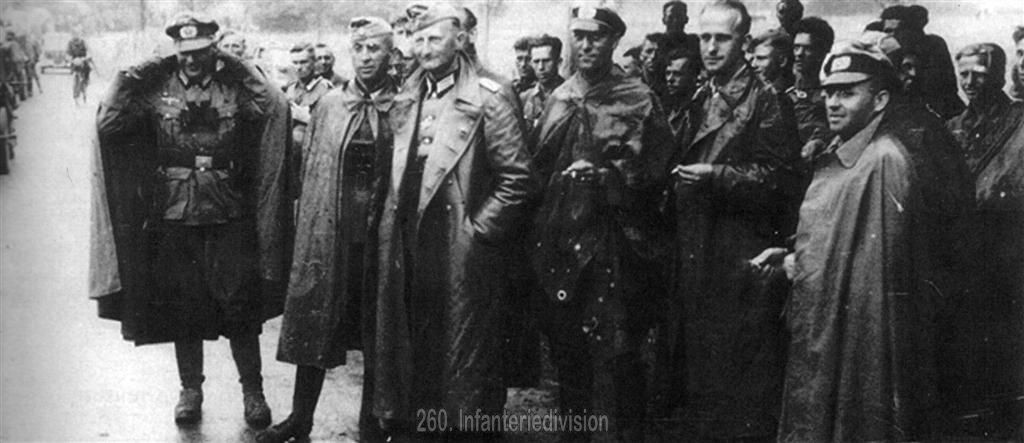
After being ill again for almost 3 months at the beginning of 1942, he became commander of Infantry Regiment 480 on March 20, 1942. However, on April 22, 1942, this assignment was cancelled and Bracher was instead transferred to the Führer Reserve effective April 01, 1942. On 01 November his promotion to colonel took place.
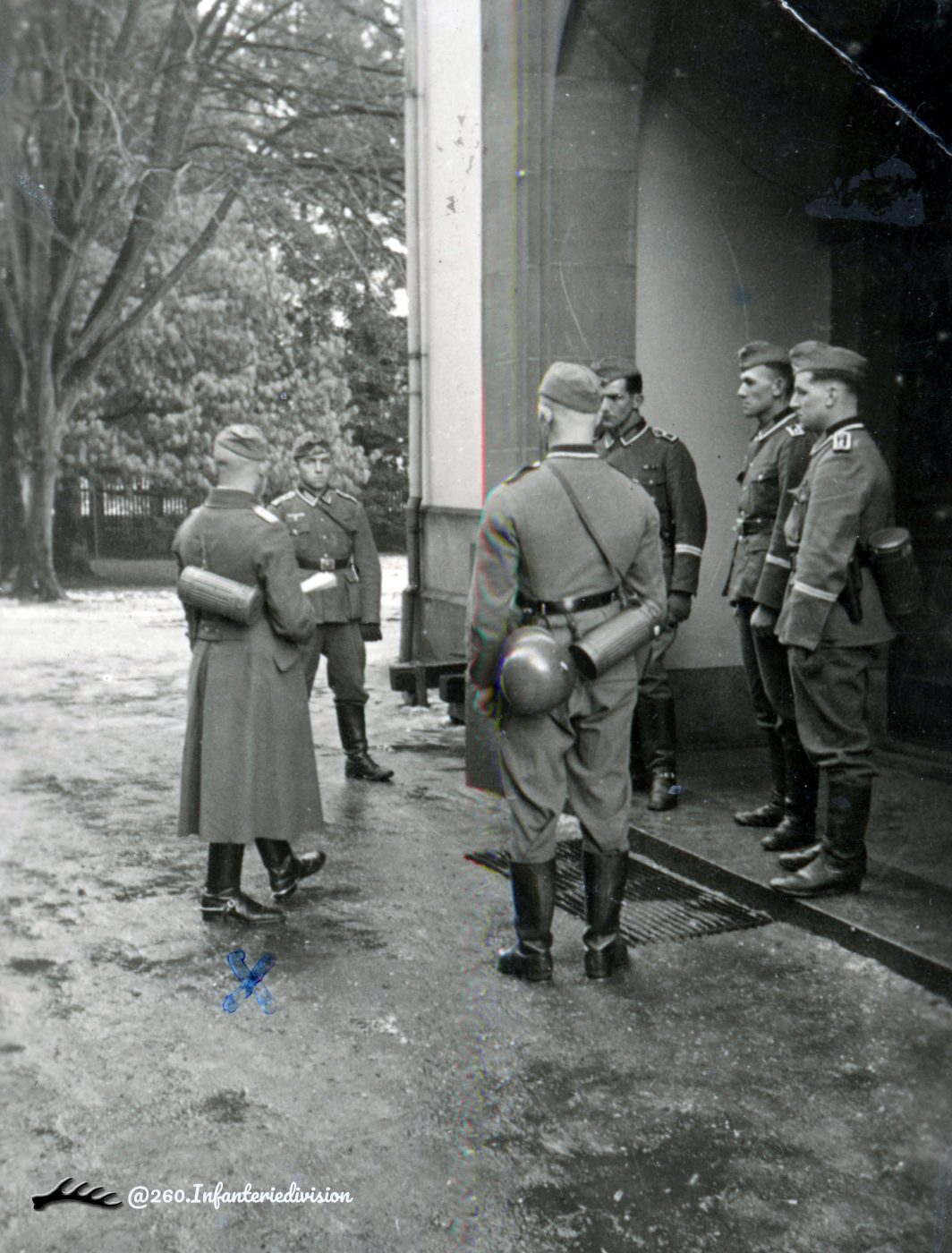
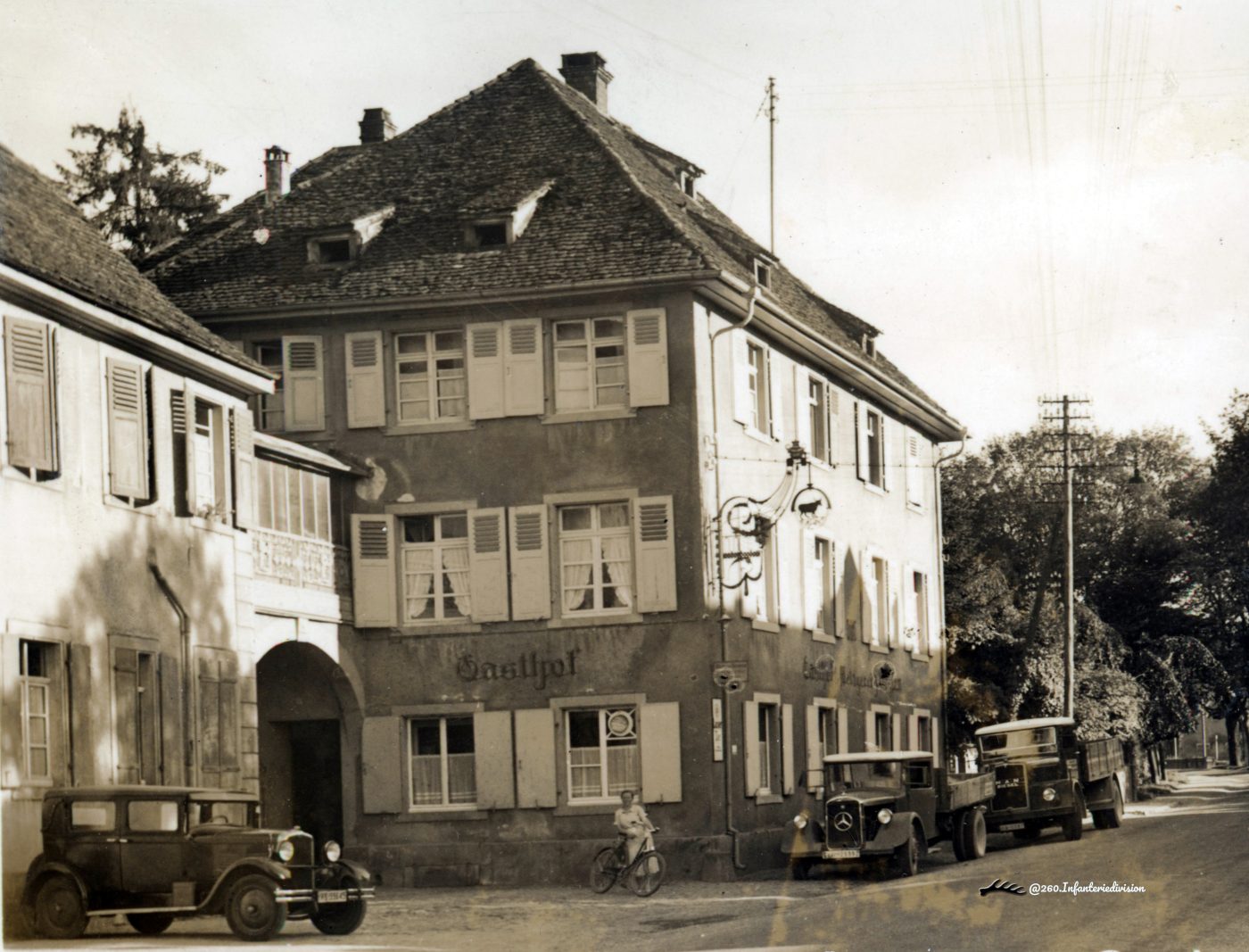
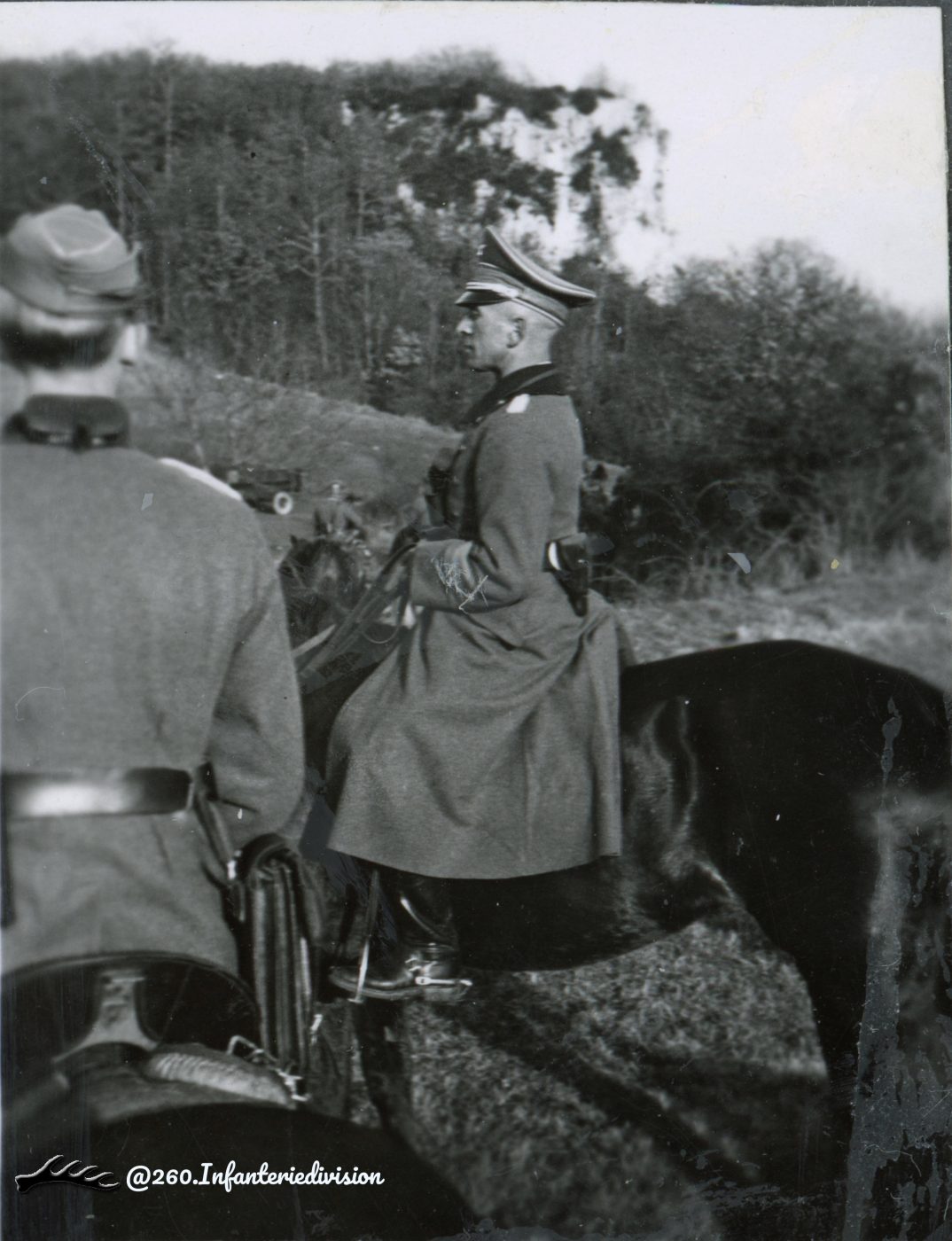
As commander of Grenadier Regiment 460, to which he was appointed on 10 April 1942, Colonel Dr. Hermann Bracher distinguished himself in the second half of August 1943 during the defensive battles in the Ssnopot position by his proven leadership, dedication and steadfastness.
After a Russian incursion with infantry and tanks southwest of Vyazma, in this same Ssnopot position, on August 08, 1943, at the left neighbor of the 260th Infantry Division, a dangerous situation arose in the rear of Infantry Regiment 460. After all radio and telephone communications had failed, Bracher decided to withdraw several companies and other small units from the main battle line and initiate a counterattack.
This counterattack inflicted heavy casualties on the enemy, completed the incursion, and thus mastered a severe crisis. Bracher is submitted for the Knight’s Cross for this personal effort. The division commander, Lieutenant General Hahm, supported this proposal, giving 17 August 1943 as the date of the deed. Also, the commanding general of the XII. Army Corps, General von Tippelskirch, the Commander-in-Chief of the 4th Army, General Heinrici, and the Commander-in-Chief of Army Group Center, General von Kluge, supported the award of the Knight’s Cross to Bracher. Thus, on August 23, 1943, as colonel and commander of Grenadier Regiment 460, he was awarded the Knight’s Cross. The award proposal No. 2018 states:
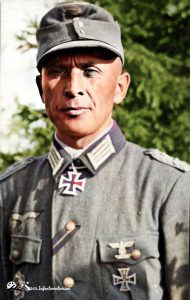
260th Infantry Division on August 19, 1943.
During the fighting southwest of Vyazma on 08 August 1943, the enemy with tanks and infantry forces achieved a breach in the left rear division, the main thrust of which was aimed at the flank and rear positions of the Bracher Regiment.
After all radio and telephone communications had failed, Colonel Bracher, of his own accord, withdrew companies and smaller formations from the main battle line and personally deployed them to counterattack, thus inflicting heavy losses on the enemy.
It was only due to the outstanding personal bravery and decisiveness of this highly experienced regimental commander, who had been wounded five times so far, that a decisive gap in the front of the 260th Infantry Division could be closed again and thus a serious crisis could be mastered.
21.08.1943
On August 17, 1943, the enemy attacked with tanks and infantry on the right wing of the division and achieved a breakthrough.
In heavy enemy fire, Colonel Bracher personally led reserves, counter-attacked, retook a lost locality and with it the dominant terrain part of the division front.
Bracher thus mastered the newly tense situation in front of the 260th Infantry Division’s front by exemplary personal effort and deprived the enemy of the possibility of launching new attacks from the dominant terrain section.
Gez. Hahm, Lieutenant General and Division Commander
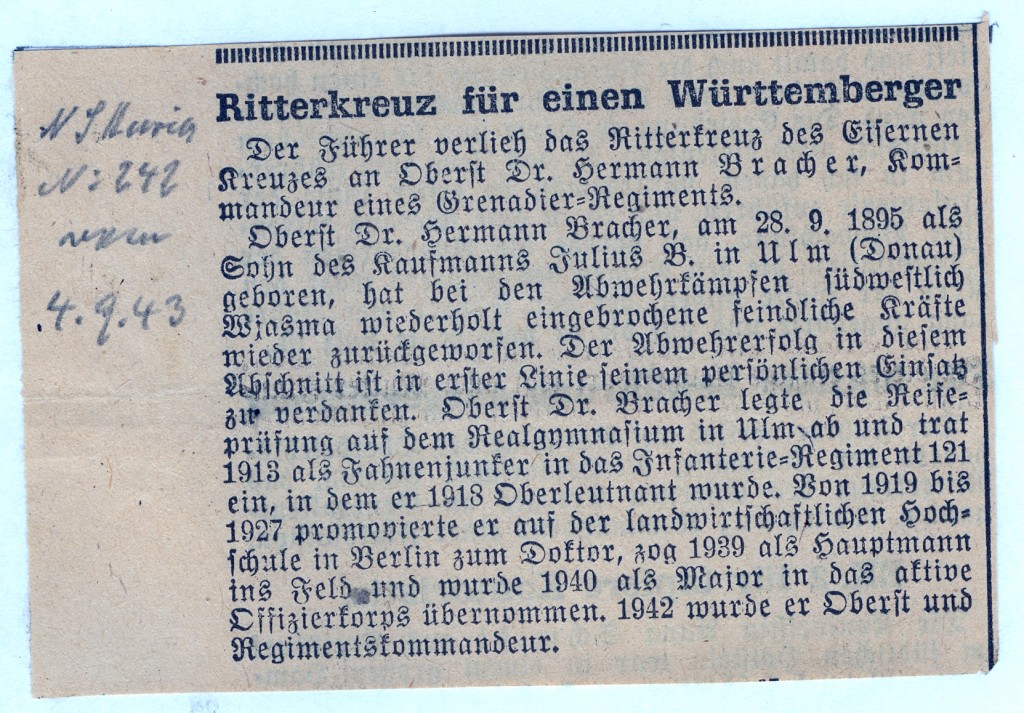
XII. Army Corps
Advocates
The Commanding General
Gez. Von Tippelskirch
General of the Infantry
4th Army
I also endorse the proposal. In the subsequent battles, the nominee has continued to distinguish himself by special bravery and decisiveness.
The Commander-in-Chief
Gez. Heinrici
Colonel General
Army Group Center
The proposal is approved by me
The Commander-in-Chief
Gez. Von Kluge
Field Marshal General
On 03 March 1944 he was also proposed for the award of the Oak Leaves, but this was rejected.
From 21 April to 10 May 1944, he substituted for the commander of the 260th Infantry Division after Lieutenant General Schlüter was wounded.
After the division was encircled several times during the collapse of Army Group Center, he formed a combat group from the remnants of Grenadier Regiment 460 after breaking out of the encirclement at Belaya-Lusha and advanced westward fairly united with about 500 soldiers.
According to the report of 02 July 1944, Colonel Bracher was missing near Shinkovtsy on the Berezina. He was reportedly seen alive by scattered troops 60 kilometers east of Minsk on July 05, 1944. Hermann Bracher, however, fell into Soviet captivity on 02 July 1944. was sentenced to 25 years of forced labor Suzdal, Oranki, Workuta (a camp of the GULAG archipelago) Voroshilograd, Krasnopol (reconstructed from his war postcard numbers). In 1953 he was in the transit camp Friedland for a short time before returning from Russian captivity on January 2, 1954.
Colonel Dr. Hermann Bracher passed away in Tübingen on October 29, 1974.
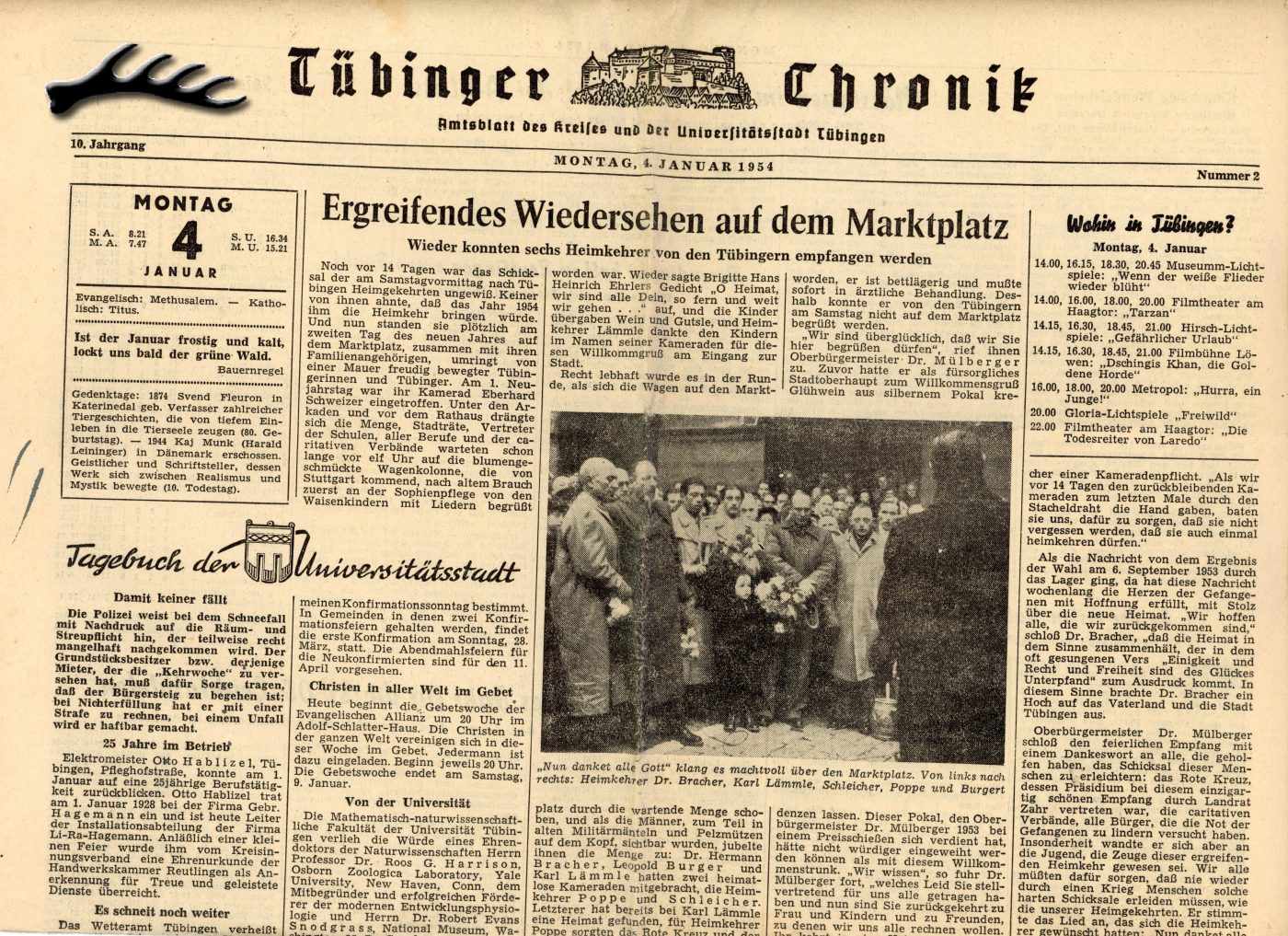
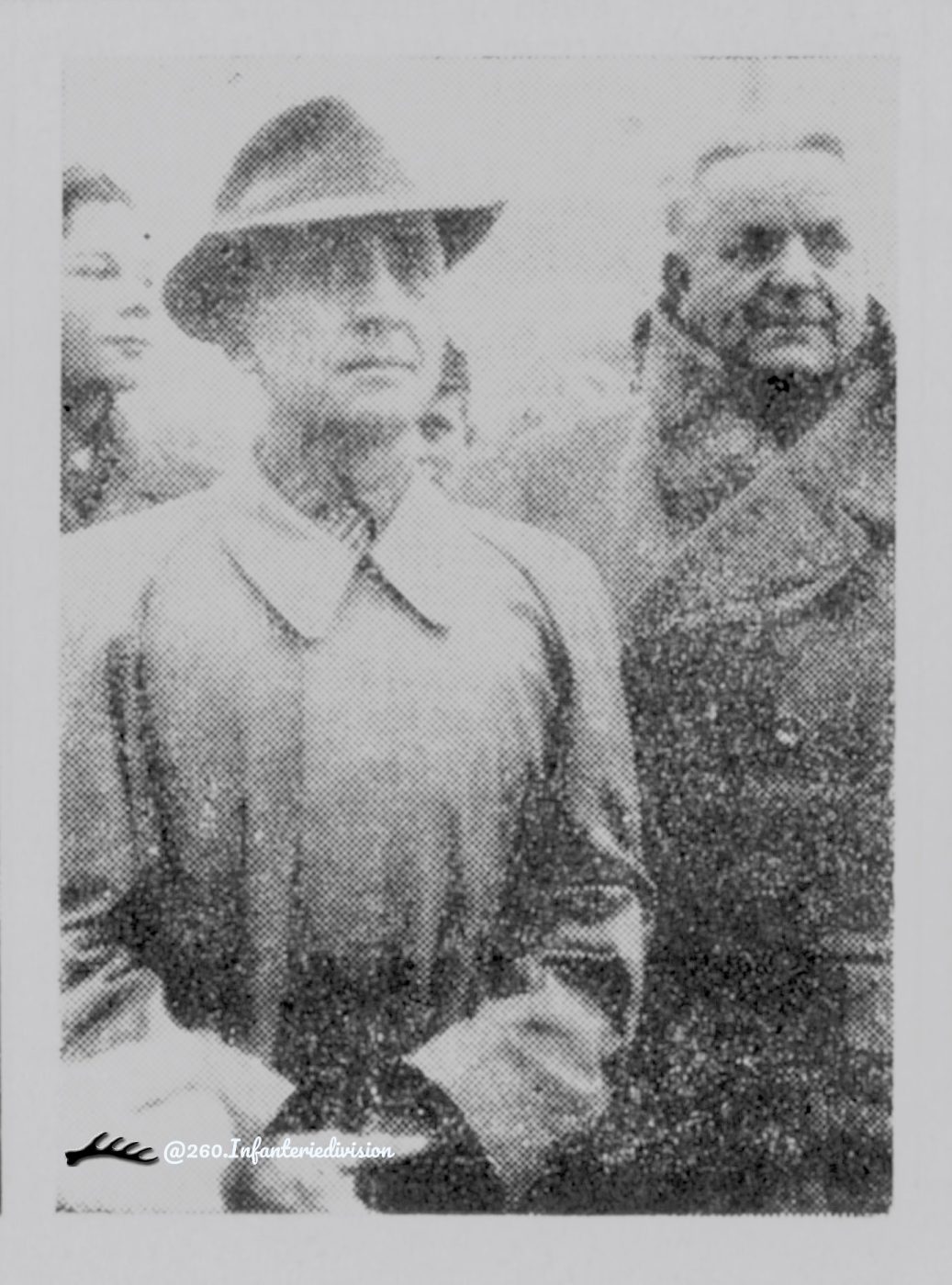
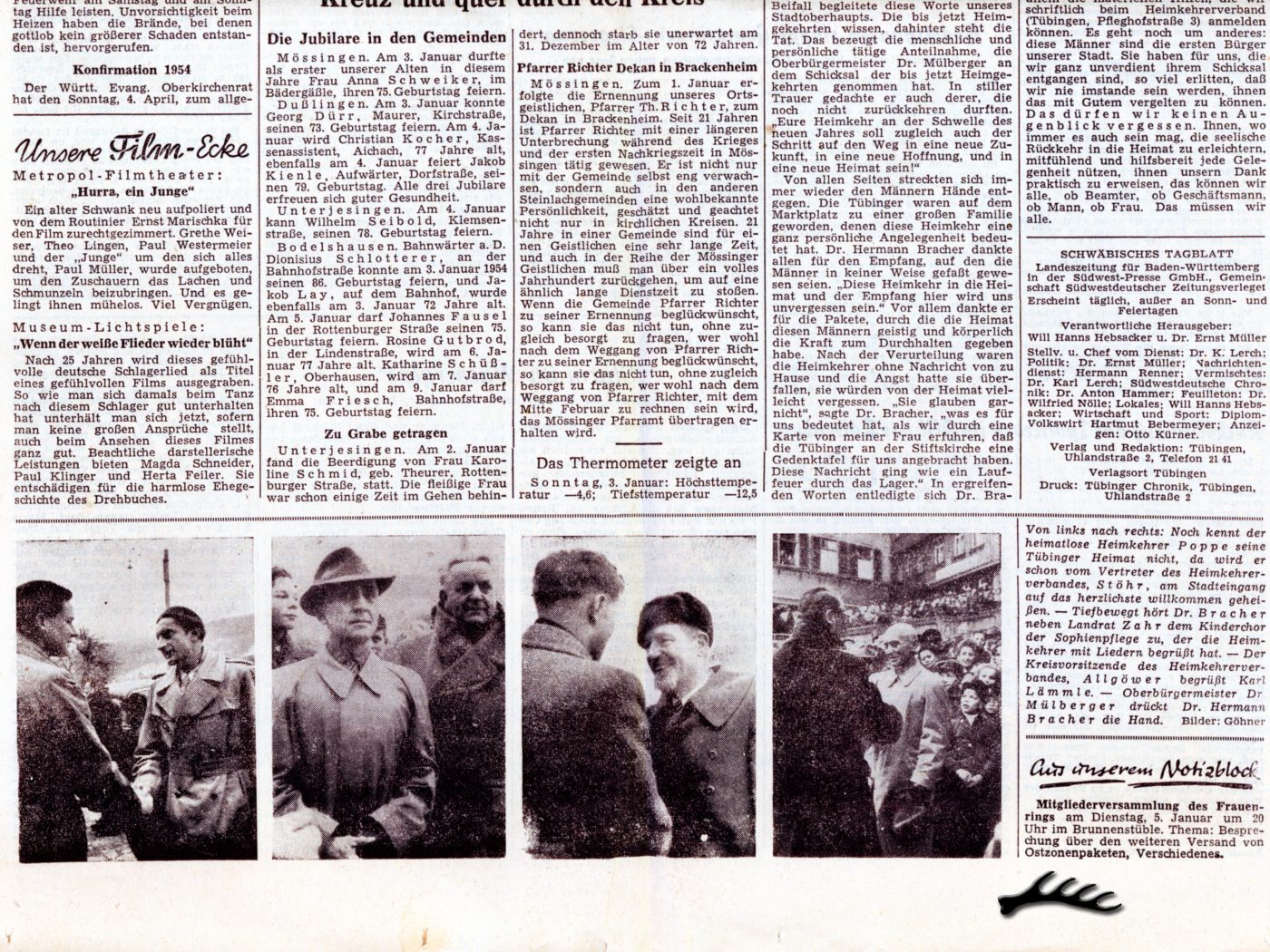
Promotions:
- 24.09.1913 – private
- 15.11.1913 – non-commissioned officer
- 22.03.1914 – Ensign
- 07.08.1914 – lieutenant
- 22.03.1918 – first lieutenant
- 23.10.1937 – captain
- 31.12.1939 – major
- 17.12.1941 – lieutenant colonel
- 31.10.1942 – Colonel
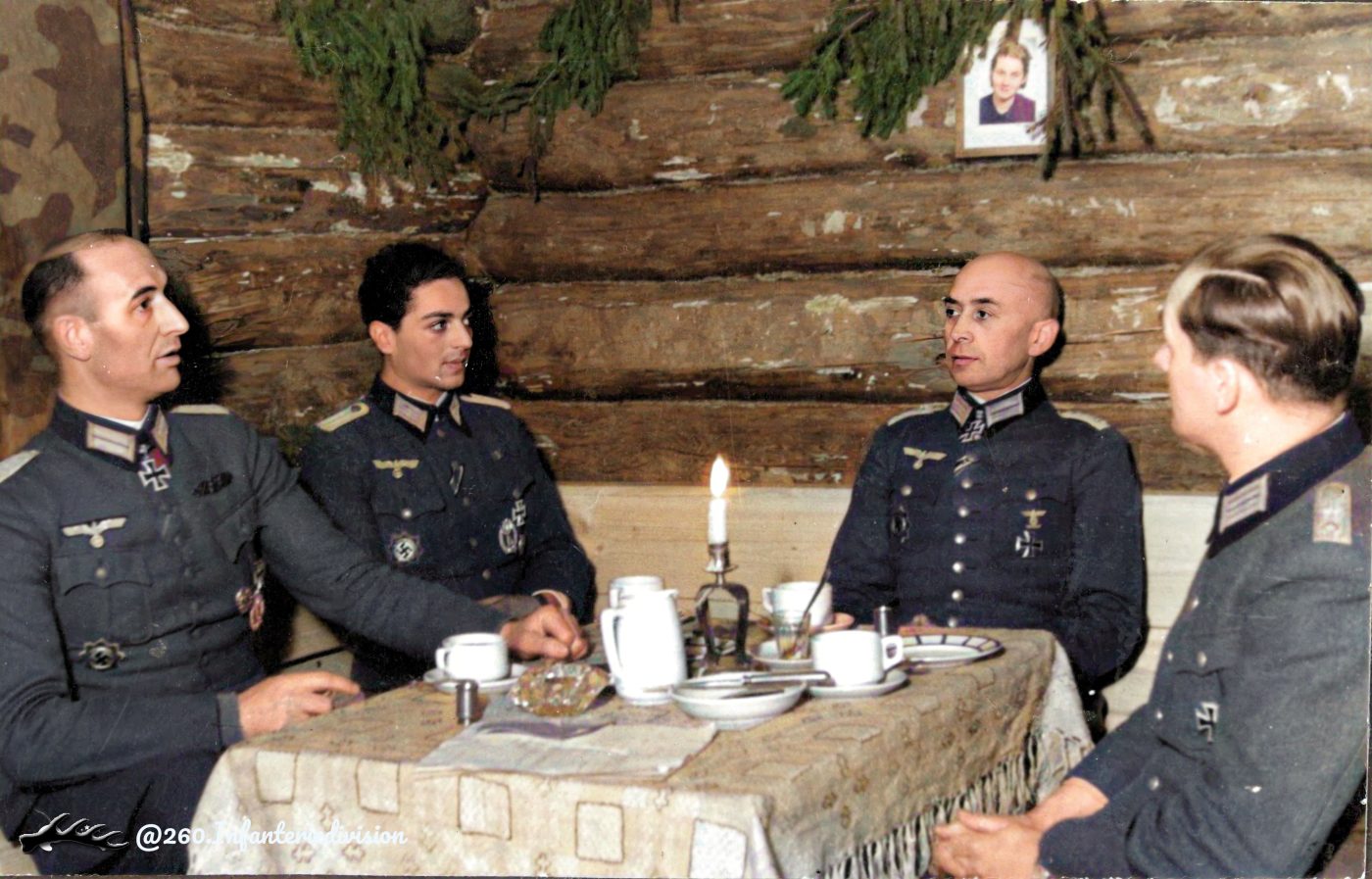
Awards:
- 16.10.1914 Iron Cross II. class
- 08.03.1916 k. u. k. Austrian Military Merit Cross III Class with War Decoration
- 20.10.1916 Iron Cross I. Class
- 10.11.1916 Knight’s Cross of the Royal Württemberg Military Order of Merit
- 24.11.1917 Knight’s Cross of the Hohenzollern House Order with Swords
- 23.06.1918 Wounded Badge in silver or matt white (World War 1)
- 25.01.1935 Cross of Honor for front-line fighters
- 13.01.1936 service award IV. class
- 25.06.1940 clasp to the Iron Cross II. class
- 27.07.1941 Clasp to the Iron Cross I. Class
- 22.11.1941 German Cross in Gold
- 01.12.1941 Infantry Assault Badge
- 25.07.1942 Medal Winter Battle in the East
- 26.11.1942 Wounded Badge in Gold
- 28.08.1943 Knight’s Cross of the Iron Cross
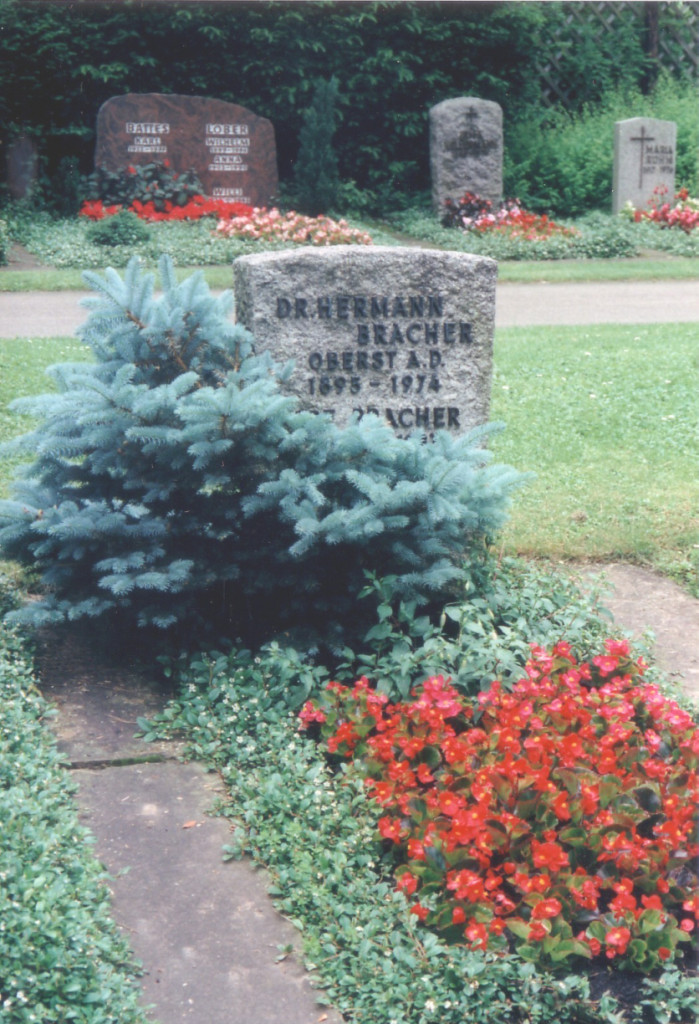
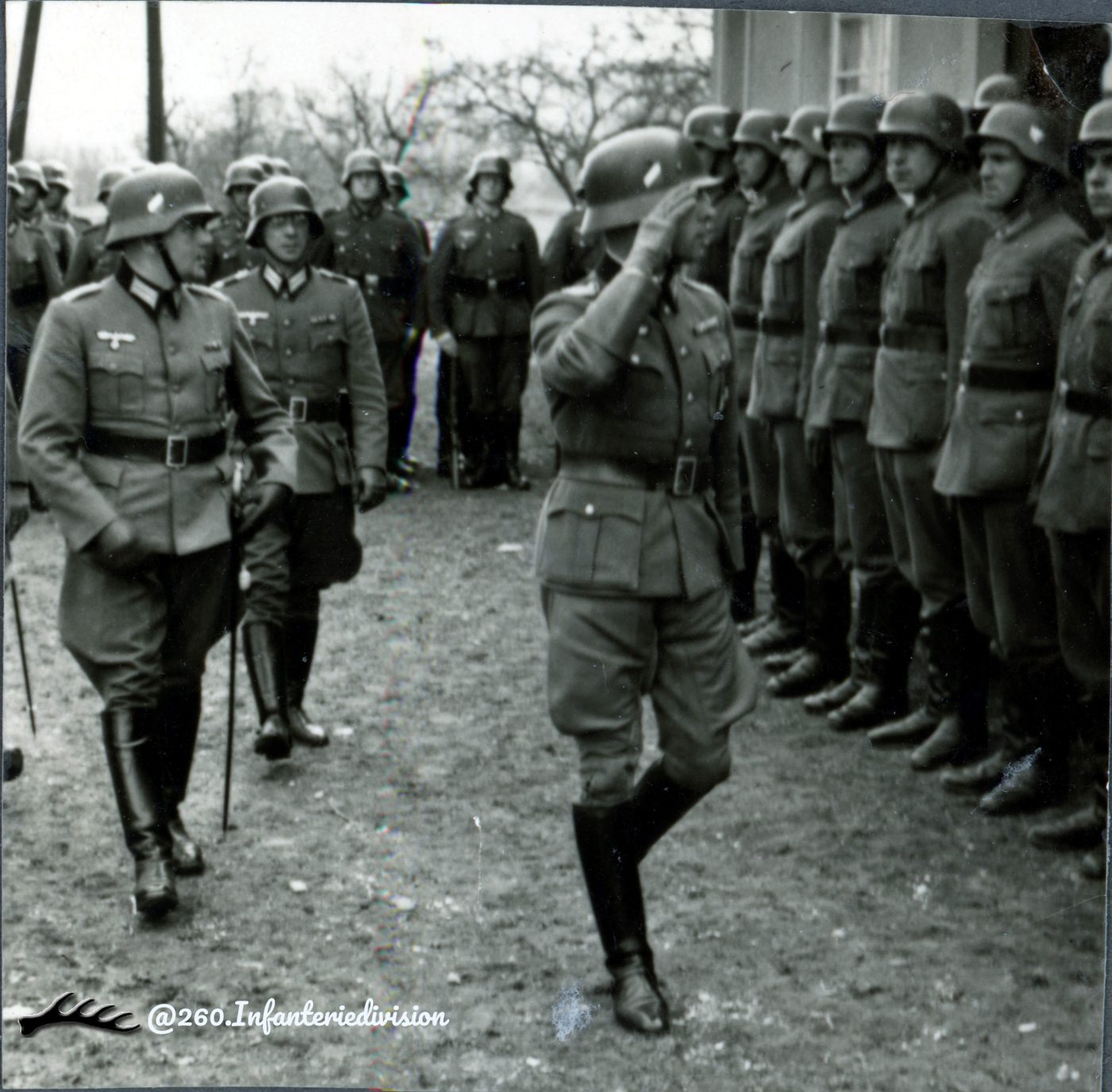
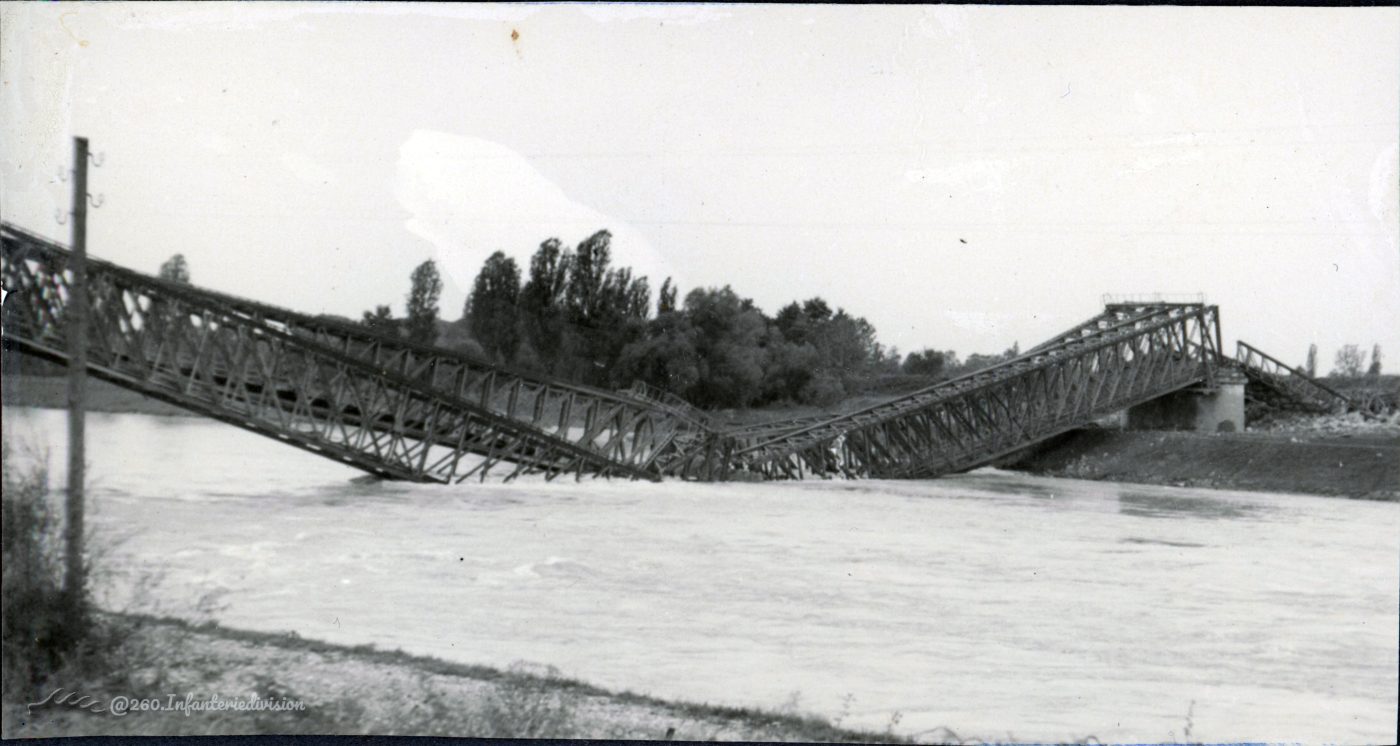
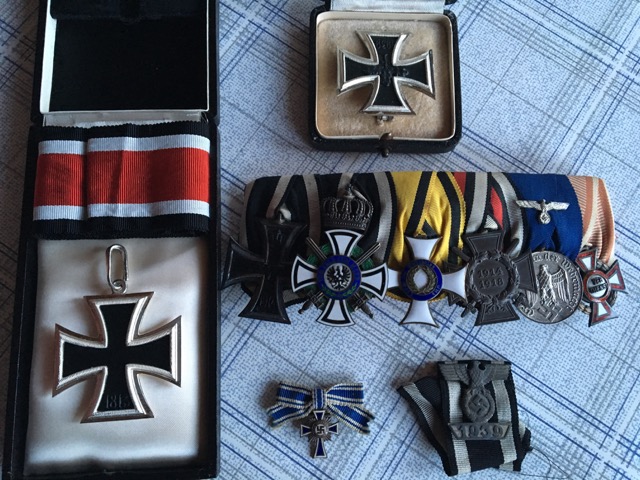
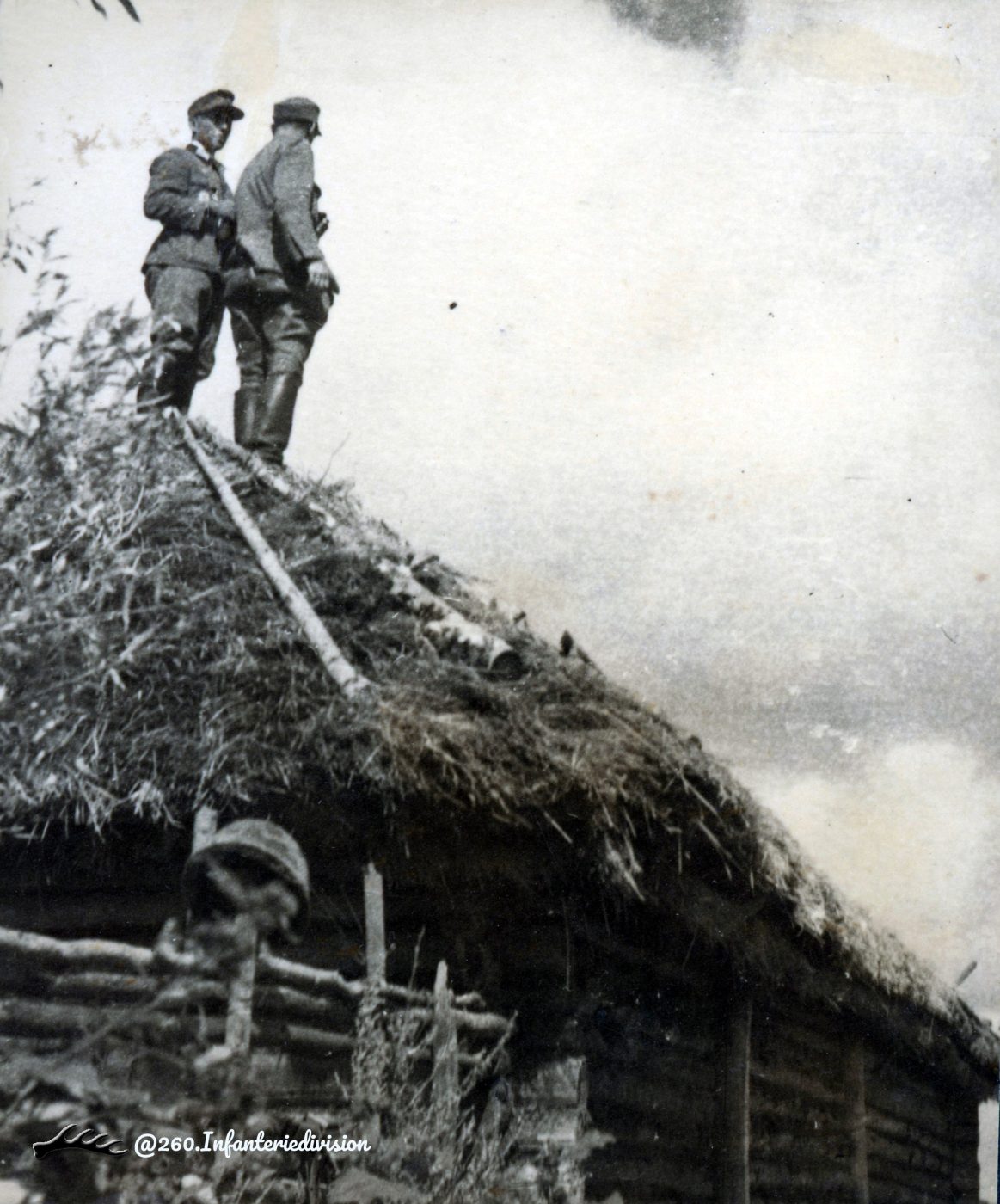
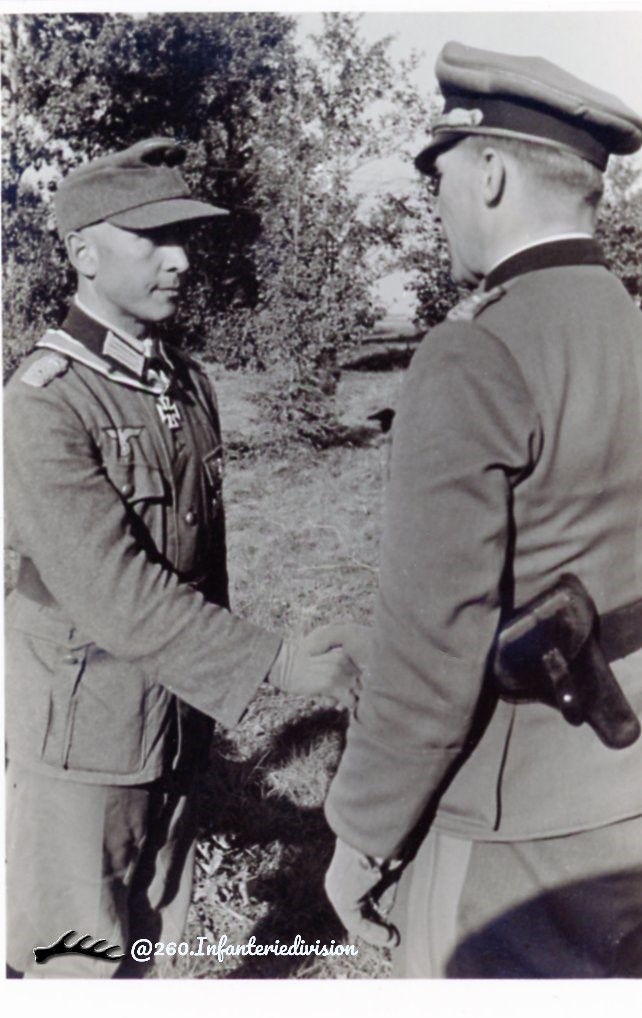
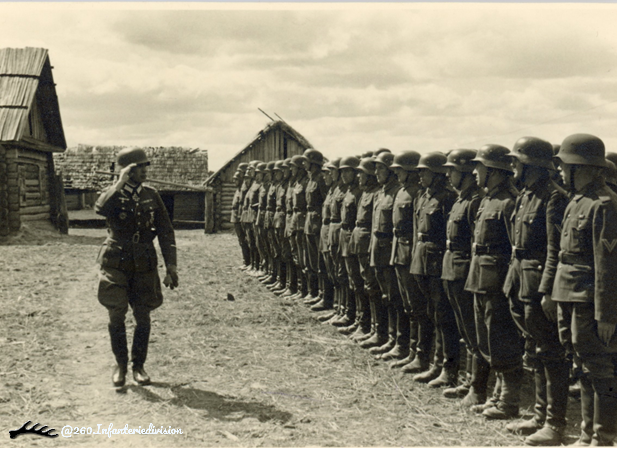
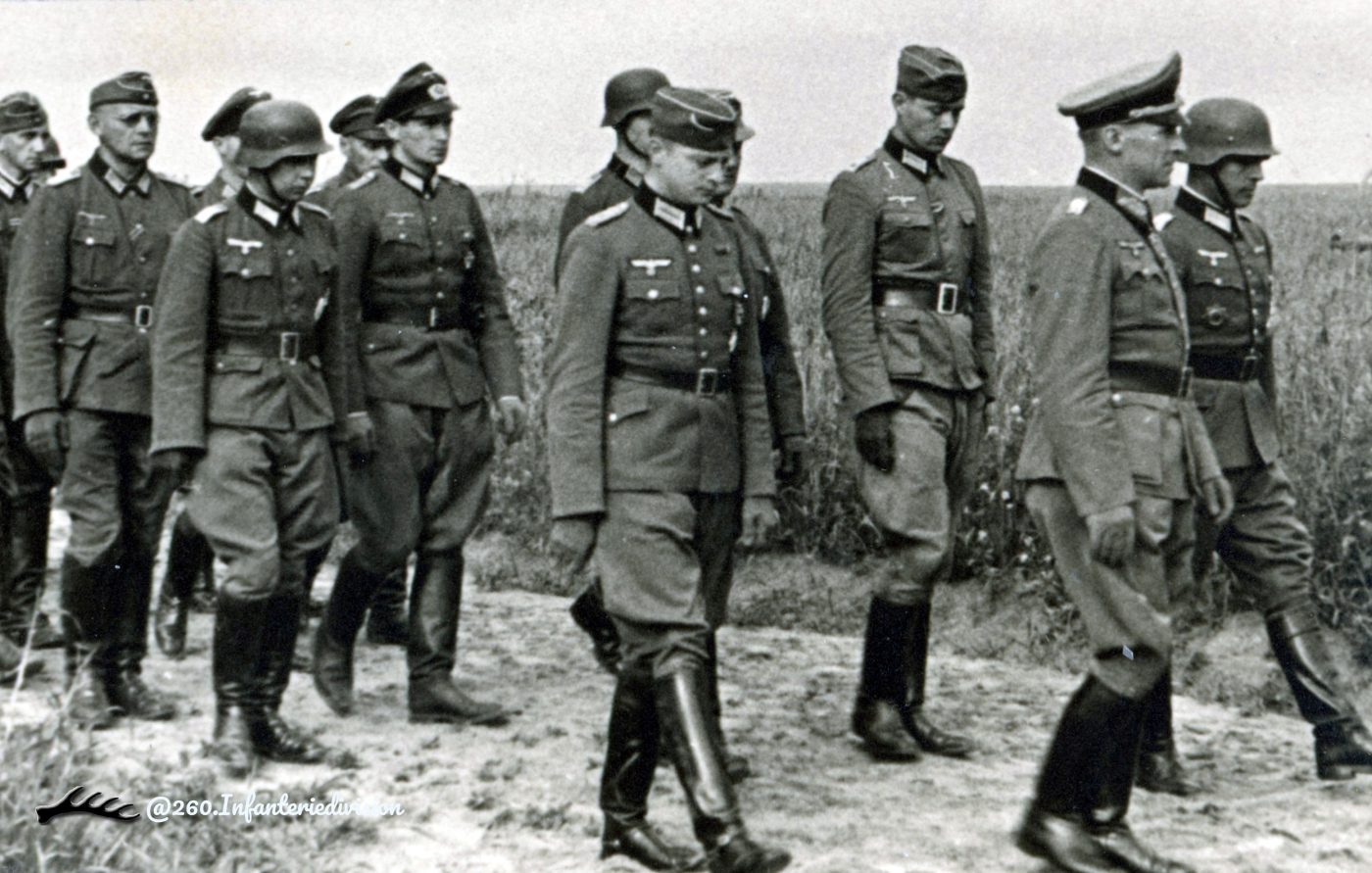
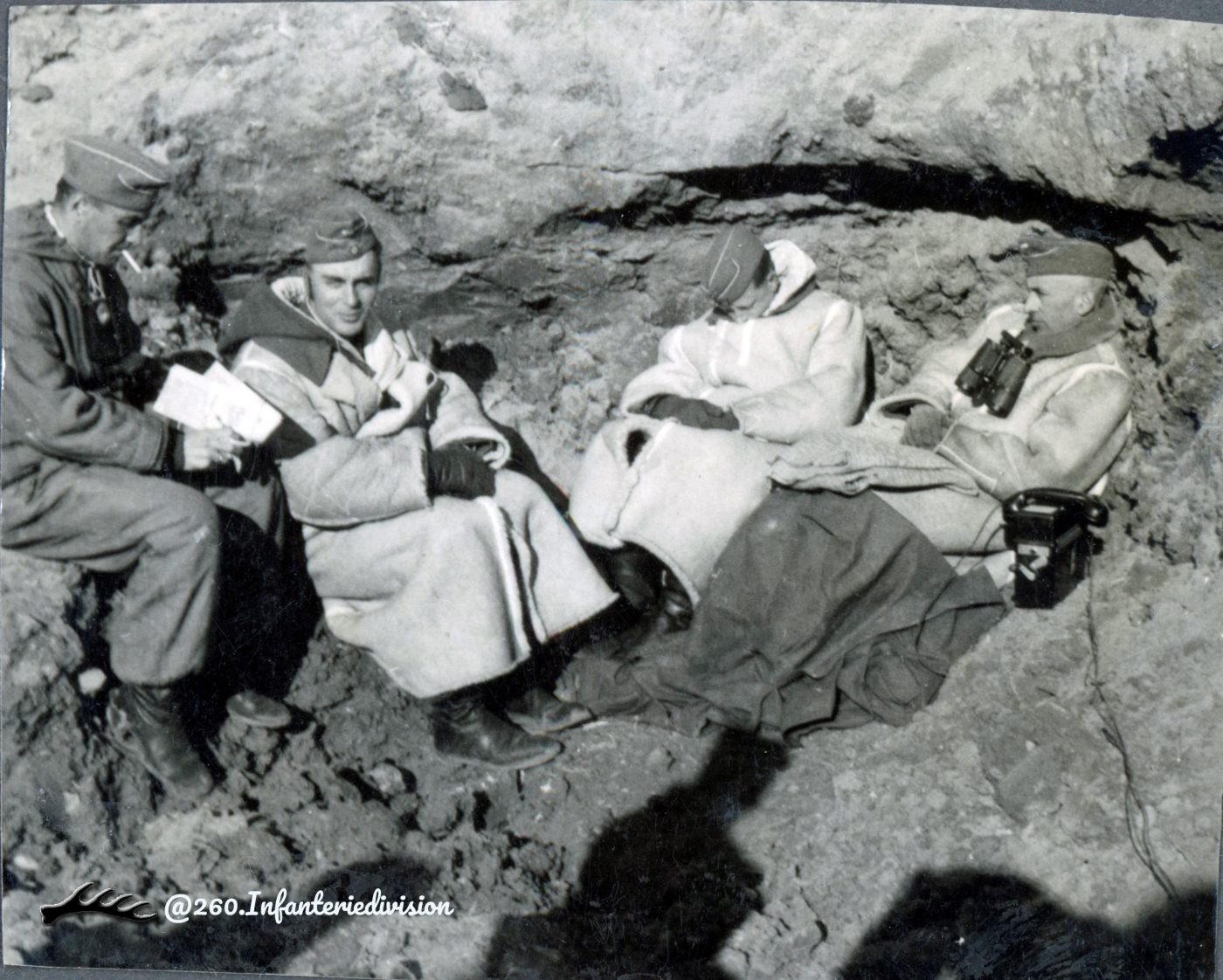
My special thanks go to the family of Colonel Dr. Hermann Julius Bracher, for providing me with valuable documents and photographic material!
